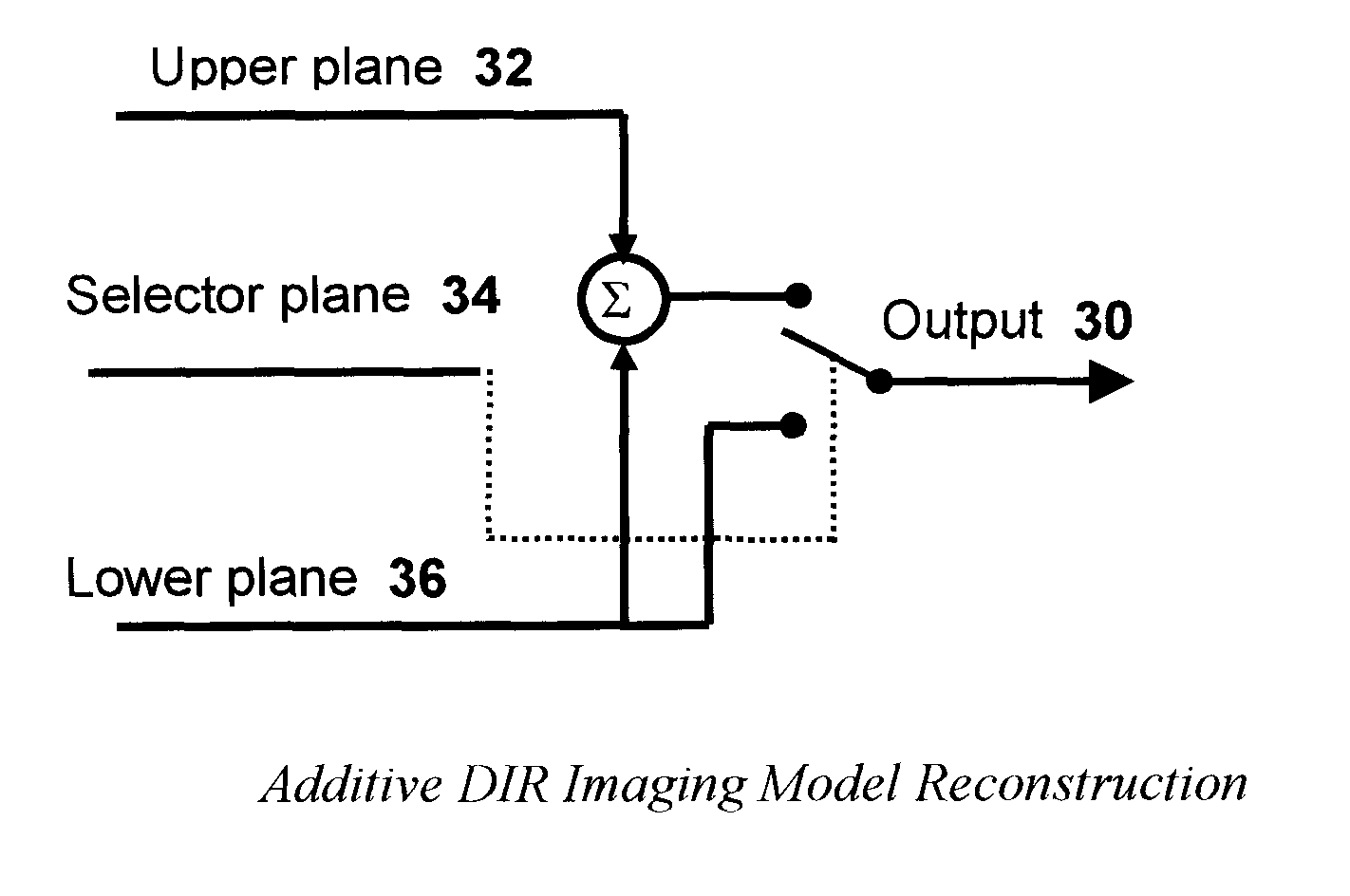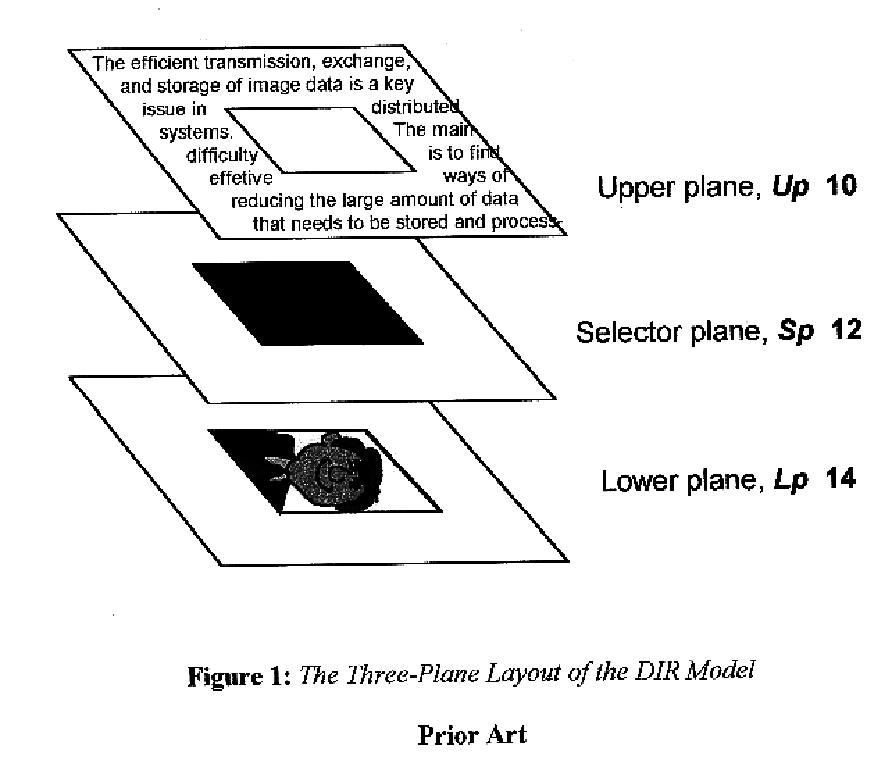Additive model for efficient representation of digital documents
a technology of additive models and digital documents, applied in the field of representation of digital images, can solve the problems of loss of image quality, no single algorithm can possibly handle all types of image classes reasonably well, and effective ways of significantly reducing the large amount of information that needs to be transferred
- Summary
- Abstract
- Description
- Claims
- Application Information
AI Technical Summary
Benefits of technology
Problems solved by technology
Method used
Image
Examples
Embodiment Construction
[0044]Referring again to the drawings, wherein like reference numberals designate identical or corresponding parts, and more particularly to FIG. 2 thereof, there is illustrated the existing DIR model based on a Selective Imaging Model. In this model, the output image 20 is reconstructed from the DIR representation (the three planes described above, comprising of an upper, lower, and binary selector plane) using a simple multiplex operation. The binary selector value 22, derived from the selector plane, is used to choose data from either the upper plane 10 or lower plane 12, on a pixel by pixel basis. Note that any information that might be present in the other plane (the one not selected by the mask) is ignored and treated as irrelevant.
[0045]As already explained, the problem with this model is that a decision must be made for each and every pixel: to select one of the upper or lower planes. The DIR spec does not specify a recommendation as to how to make that decision, so in theor...
PUM
 Login to View More
Login to View More Abstract
Description
Claims
Application Information
 Login to View More
Login to View More - R&D
- Intellectual Property
- Life Sciences
- Materials
- Tech Scout
- Unparalleled Data Quality
- Higher Quality Content
- 60% Fewer Hallucinations
Browse by: Latest US Patents, China's latest patents, Technical Efficacy Thesaurus, Application Domain, Technology Topic, Popular Technical Reports.
© 2025 PatSnap. All rights reserved.Legal|Privacy policy|Modern Slavery Act Transparency Statement|Sitemap|About US| Contact US: help@patsnap.com



